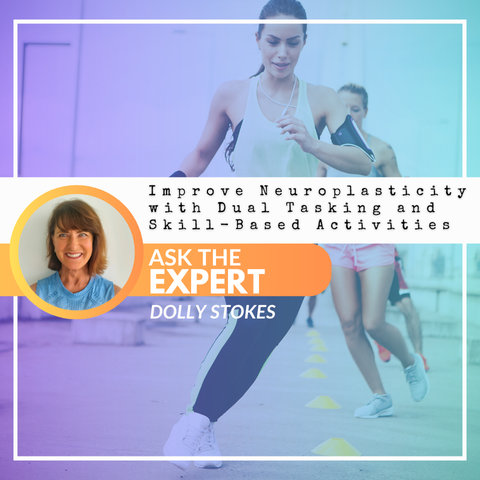Submitted by Melissa Vidito on

by Dolly Stokes, FiTOUR® Research and Development
Neuroplasticity, defined as the brain's capacity to adapt and reorganize itself, is essential for the body's movement and response to stimuli. This concept is significant in fitness, where structured training programs utilize neuroplasticity to enhance movement skills and efficiency, as well as correct dysfunctional movements.
Activities that focus on coordination, balance, and dual tasking can stimulate neuroplastic changes. Exercises like dynamic balance challenges, motor skill drills, or combining physical and cognitive tasks enhance neural pathways, improving movement efficiency through consistent practice.
Although neuroplasticity exercises are frequently linked with older adults, fitness professionals can apply these activities to enhance various aspects of any client's life, including memory, movement, and proprioception, regardless of their age.
Apply the 10-20-30 Rule
When teaching clients how to perform an exercise correctly, it takes time and repetition for the neuromuscular system to perform the exercise with coordination, balance, and in a smooth and fluid manner.
The “10-20-30 Rule” in Pilates is a good illustration to help us understand how long it may possibly take for someone to “re-learn” a movement pattern.
The Rule states:
-
After 10 sessions, your body will feel different.
-
This may be manifested in an improved sense of body awareness.
-
After 20 sessions, your body will look different.
-
This may not necessarily be from an aesthetic standpoint, but may be seen through improved performance of movement patterns.
-
After 30 sessions, your body will be different.
-
This may be seen through marked improvements in coordination, balance, proprioception, behavioral speed, and fluid performance of movements.
-
Once 30 sessions are achieved, the continuum starts over and continues with every 30 sessions completed.
The continuum of the 10-20-30 Rule can be likened to systematically peeling an onion, layer by layer. Each session helps refine an individual's coordination and balance, enhances muscle endurance and strength, develops movement fluidity, and improves proprioception.
The application of the 10-20-30 Rule extends beyond Pilates and may be utilized for any exercise modality or new skill acquisition.
Dual Tasking
Dual tasking involves physical activity performed alongside drills that place cognitive demands on the nervous system. Dual tasking has been shown to have an impact on negating or slowing cognitive decline. Many activities of daily living involve dual-tasking:
-
Talking on the phone while walking.
-
Driving a vehicle.
-
Navigating stairs while carrying packages.
-
Folding laundry while watching a movie.
Mind/body activities such as yoga, Pilates, and myofascial release require dual-tasking and have been shown through research to improve cognitive function. Additionally, cardio-based activities such as step aerobics, kickboxing, and navigation of an obstacle course in boot camp can help to improve cognition.
Skill-Based Activities
Another tool to elicit neuroplasticity is to incorporate open-skills exercises.
Closed-skills activities are straightforward to learn and easily performed. These exercises include predictable movement patterns, such as linear exercises with repetitive motions or resistance machines.
In contrast, open-skills activities are more complex and require greater attention and focus. These activities involve dual-tasking and multi-planar movements such as the cardio-based activities listed above. Other examples of open-skills activities include balance activities, agility drills, and resistance training using dumbbells, barbells or suspension equipment.
Research strongly supports that open-skills activities are more effective at enhancing cognitive function compared to closed-skills activities. Moreover, maintaining proficiency in open-skills activities is associated with higher levels of physical function throughout the aging process.
For specific information on various types of neuroplasticity training, check out the FiTOUR® Active Aging Advanced course. FiTOUR® also offers a variety of courses that incorporate dual tasking such as Kickboxing, Boot Camp Primary and Advanced, Step, Myofascial Release Primary and Advanced, Yoga Primary and Advanced, Pilates Primary and Advanced, Pilates Reformer, and Suspension Primary and Advanced.
With over 35 years’ experience as a fitness pro, Dolly is certified through AFAA, ACE, NASM, IDEA and FiTOUR®. A FiTOUR® ProTrainer since 2002, she has authored 12 FiTOUR® certification courses. Dolly has presented at IDEA World and was a PFP 2019 Trainer of Month. She owns StokesMethod Studio in Fairhope, AL.
